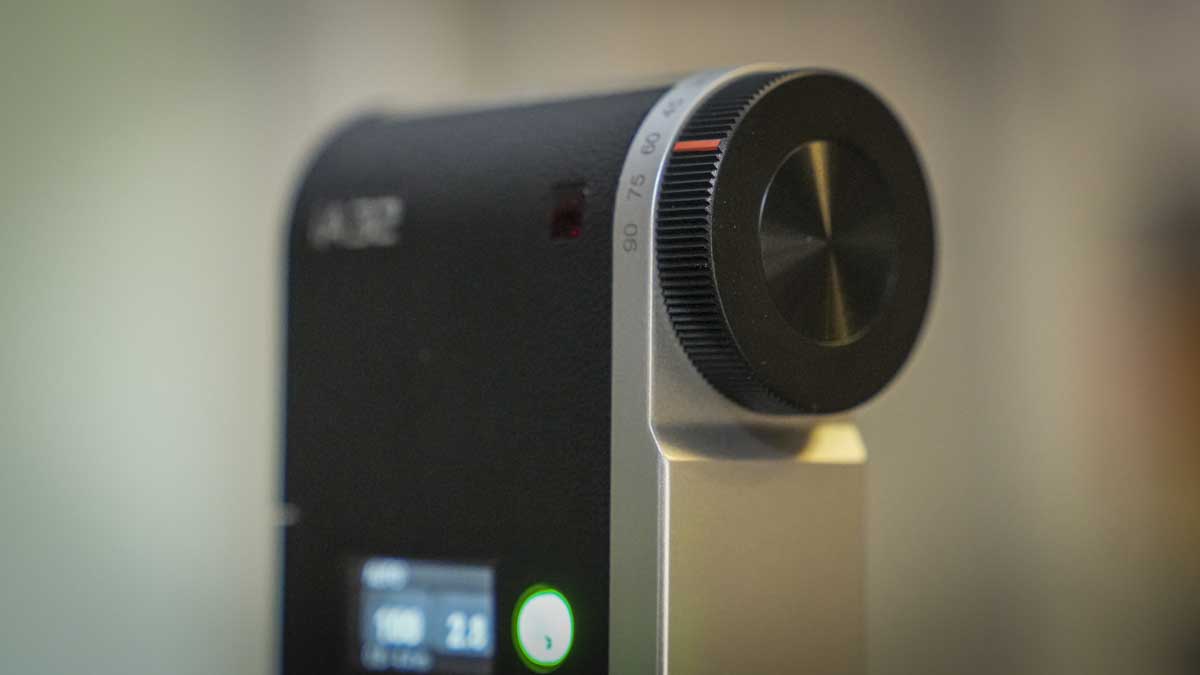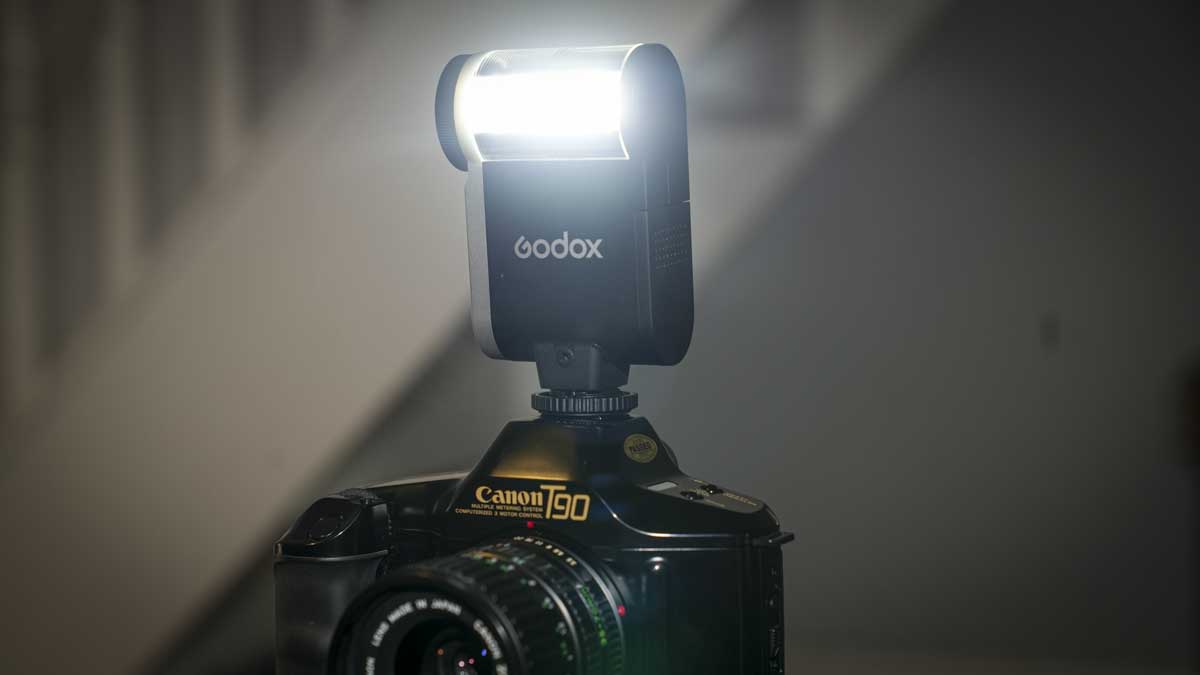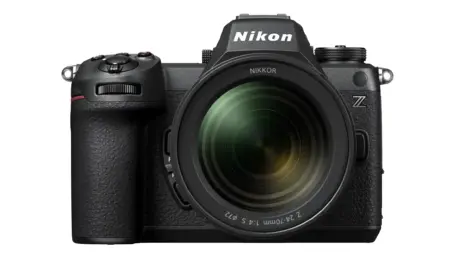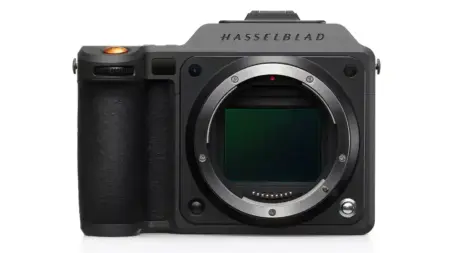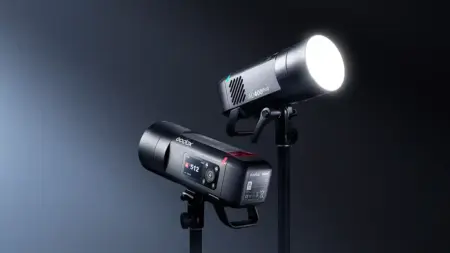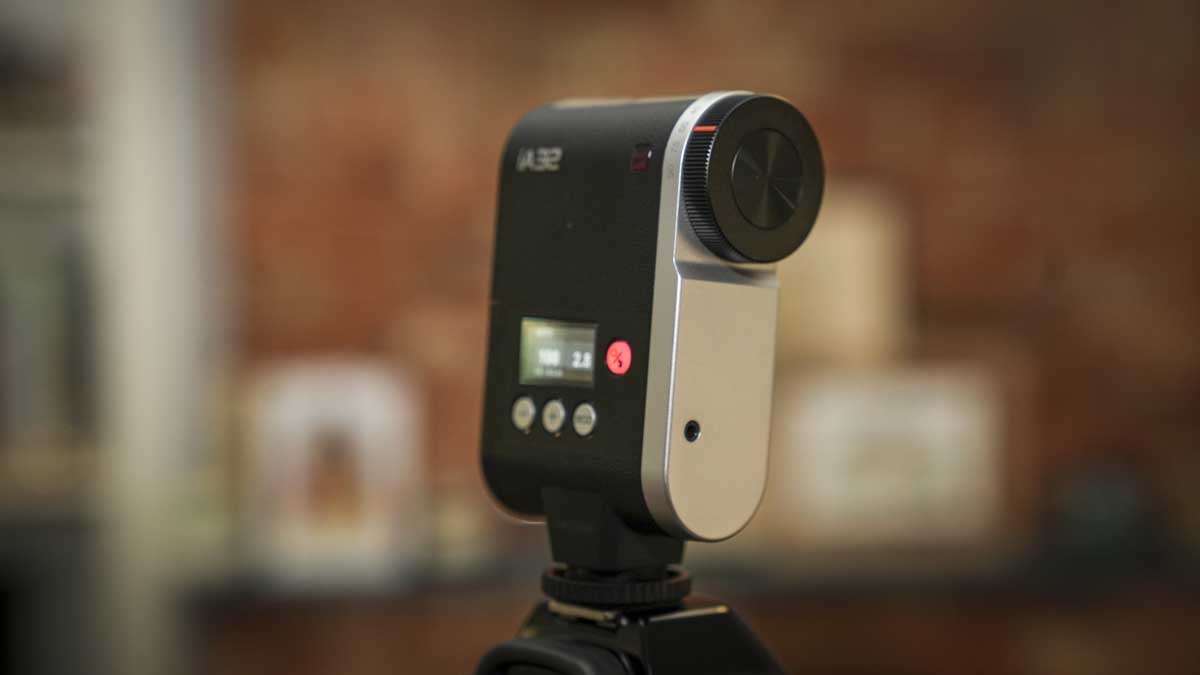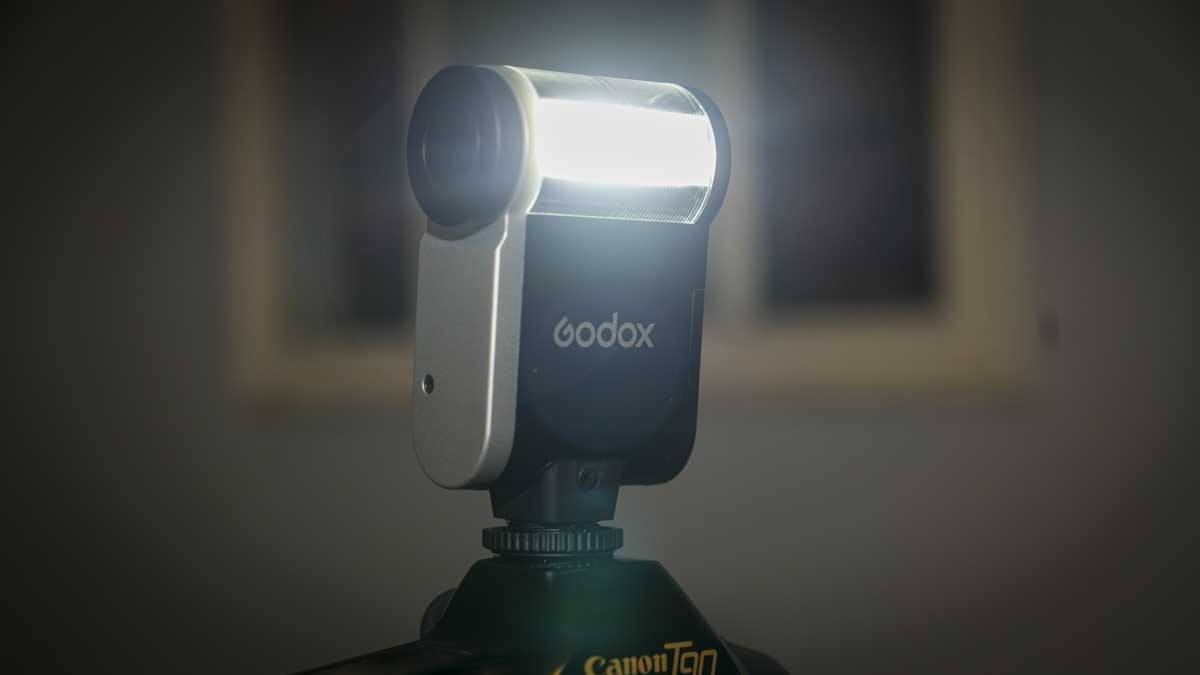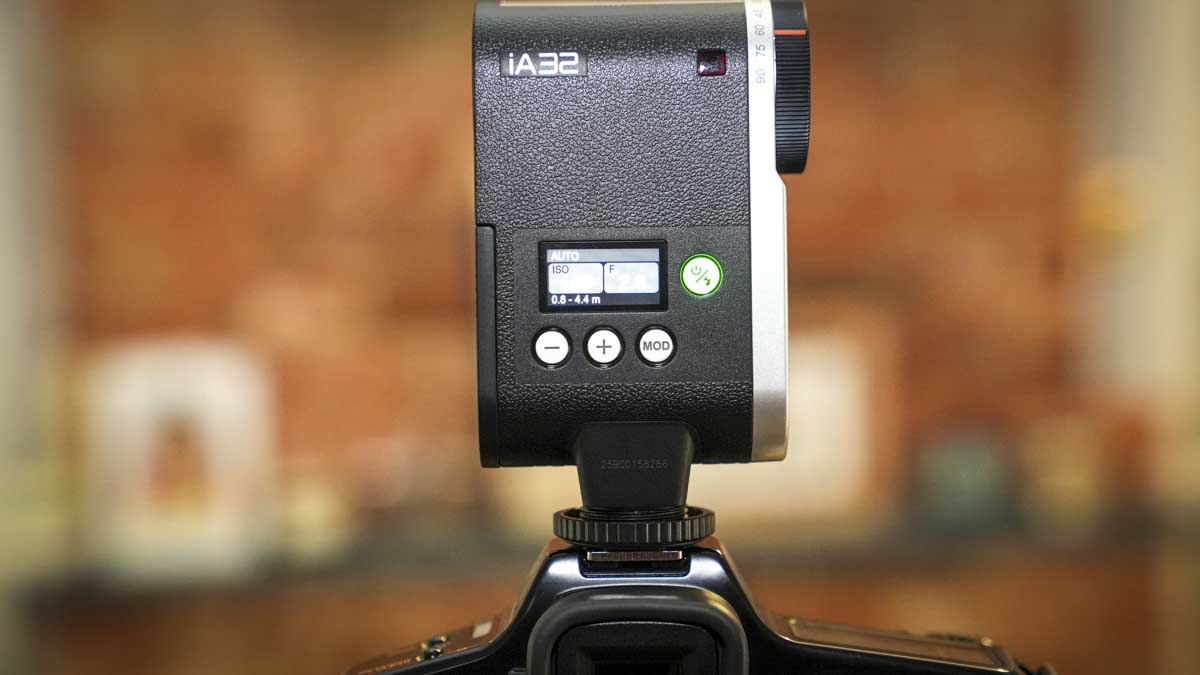Getting started with the Godox IA32 is simple enough: just pop open the side door, insert 2AA batteries, secure it closed, and then pop the flash onto your hot shoe. As I mentioned earlier in the review, I did find that with some Canon cameras, the hot shoe was just too shallow to take this, or for that matter any standard flashgun, but the fit on the Canon’s doesn’t seem to be consistent, fitting on some and not on others, so it’s well worth checking compatibility prior to buying.
However, when I tried it on almost every other camera, other than the Canon EOS R50, it fitted perfectly, and then it was only a case of pushing down the shutter, and the flash would fire.
Using basic manual flash operation is extremely easy. All you need to do is adjust the power on the back, set the camera’s exposure settings, and take a shot. Adjusting the power of the flash using the simple buttons on the back is exceptionally easy.

What adds a little bit more performance to this flash over other simple manual flashes is the fact that the additional height reaches over longer lenses, so you avoid any shadow cast by the lens. But the main feature of this flash is the fact that you can rotate the flash head from -7° to 90°, which is extremely useful if you want to create retro-style portraits with a direct flash, or prefer something a little bit more modern by bouncing the flash off the ceiling. It’s actually quite surprising how versatile this type of flat head can be for its compact size and comparatively cheap price.
The build quality is a little bit plasticky, but that falls in line with the retro look and feel. The fact that it’s got a 2.5 mm sync port on the side enables you to connect with more traditional flash setups. If you have a wireless trigger, then you can hardwire that directly into the flash, so that you can use it as a very compact off-camera flash.
It also features an optical sensor, so if you want to use this as a slave, then you can. As is normal, there are two slave options, slave one is the more traditional and will fire as soon as it detects another flash firing; the second mode is designed to get over any pre-flash triggering, so if your main flash has a pre-flash to avoid red-eye, it’ll ignore that and only fire on the secondary flash.

In both S1 and S2 modes, the flash works exceptionally well and seems to have decent sensitivity, which means that it could be placed around the subject with a good hit rate when triggered by the primary, which in this case was the V1 100.
Through the test, I used the flash with XTAR XRL4Pro AA batteries and was really impressed by the performance of the batteries themselves, but also by the flash, getting well over 300 full-power flashes from a single use with power left in reserve.
There was also one other feature that I was keen to investigate, which I didn’t fully understand how it would work when you have a flash that doesn’t have any TTL monitoring, yet still offers an auto mode. As I started to use the auto feature, which was accessible by holding down the mode button for a couple of seconds, it all started to make sense. It’s actually a little bit more simplistic than I had first thought.
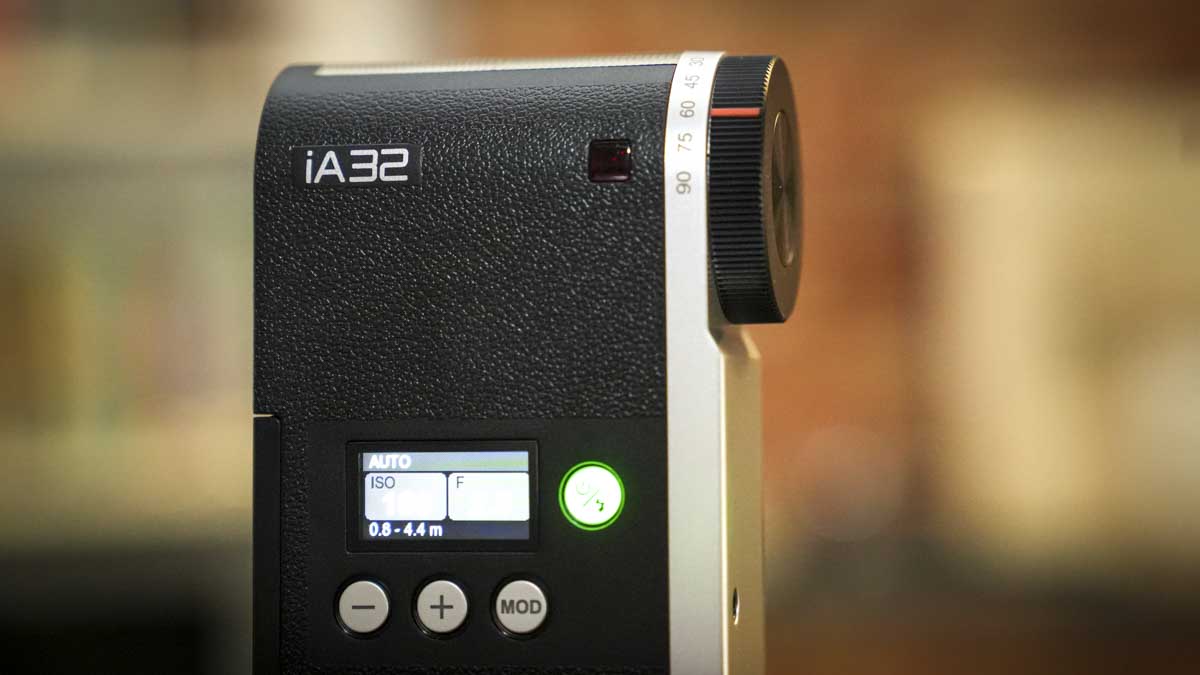
Essentially, dial in your ISO, set the aperture in the flash, then set the shutter speed on your camera, say 1/200 seconds, and take your picture. There’s a light meter on the front of the flash unit that takes a reading of the scene and, as you fire the shutter, the flash adjusts power depending on the distance you are from the subject. This system works quite well, but there is a little bit more to it. When it comes to the subject distance, you need to work that out, and like all good retro equipment, Godox has supplied a chart showing you the aperture value, shooting distance in metres, and ISO value.
All you need to do to use the auto mode is take a look at what you’ve got, at the distance you want to shoot, say 0.925 m, then set the aperture. If you have an aperture of f/8 at 2m, then at that distance, the ISO will be 250. Once you take the shot, you should get a perfect exposure; if not, then you can adjust the settings as needed. If you go out to 5 m, then everything will be a bit too dark, and if you go closer than 0.9 m, then everything is going to be a little bit too bright. It makes sense once you start using it, and it’s actually quite intuitive, with quite a lot of flexibility in that distance, and ultimately, you’ve used it once or twice, you do start to get the idea behind it all.
I think that this is a throwback to traditional film, where charts were a major part of photography. When you wanted to work things out accurately and scroll your finger across the page in a small book to work out exposure times, it was just part of the course, so it was quite good fun doing it here.
